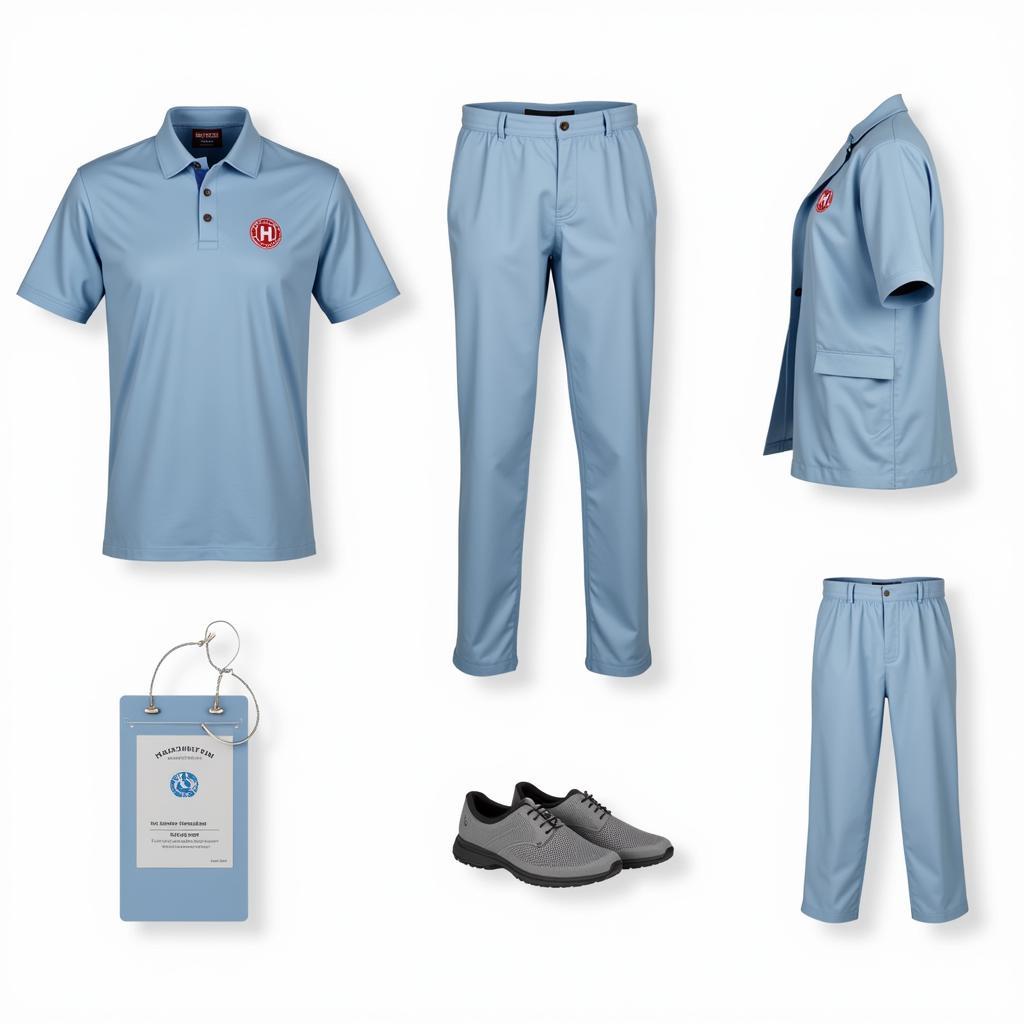Hospital Volunteer Uniforms play a vital role in creating a professional and welcoming environment. They not only identify volunteers but also contribute to patient comfort and the overall efficiency of the hospital setting. This guide will explore the importance of hospital volunteer uniforms, the typical dress code requirements, and the significance of presenting a professional image.
Understanding the Importance of Hospital Volunteer Uniforms
Hospital volunteers are an integral part of the healthcare system, offering invaluable support to patients, staff, and visitors. Their presence contributes significantly to a positive hospital experience. A standardized hospital volunteer uniform helps distinguish volunteers from medical professionals and other staff members, preventing confusion and ensuring patients can easily identify those who can assist them. This clarity is particularly crucial in emergency situations and for patients who are unfamiliar with the hospital layout. Beyond identification, the uniform fosters a sense of trust and professionalism, reassuring patients that volunteers are trained and committed to providing quality assistance.
The Impact of Professional Appearance
First impressions matter, especially in a healthcare setting. A neat and well-maintained hospital junior volunteer program uniform projects an image of competence and care, putting patients at ease. It signals to patients and their families that the volunteer is dedicated to their role and takes pride in representing the hospital. This professional appearance can significantly influence patient perception and contribute to a more positive overall experience.
Decoding the Hospital Volunteer Uniform Dress Code
While specific requirements may vary between hospitals, some common elements typically define the hospital volunteer uniform. Comfort and practicality are key considerations, as volunteers often spend long hours on their feet.
Common Uniform Components
- Shirts/Tops: Often polo shirts or button-down shirts in designated colors, frequently featuring the hospital logo.
- Pants/Skirts: Comfortable and professional-looking pants or skirts in neutral colors are standard. Scrubs may also be part of the uniform in certain departments.
- Outerwear: A light jacket or sweater with the hospital logo may be provided for warmth and identification in cooler areas.
- Footwear: Closed-toe, comfortable shoes are essential for safety and hygiene. Specific requirements regarding color and style may apply.
- Accessories: Name badges are mandatory for identification, and jewelry is usually kept minimal for safety and hygiene reasons.
 Essential Components of a Hospital Volunteer Uniform
Essential Components of a Hospital Volunteer Uniform
Why Adherence to the Dress Code Matters
Adhering to the dress code demonstrates respect for the hospital’s regulations and the importance of maintaining a professional image. It contributes to a cohesive and organized environment, reinforcing the sense of teamwork and shared purpose among volunteers. erlanger hospital volunteer programs emphasize the need for a polished appearance.
The Significance of Presenting a Professional Image
The hospital volunteer uniform symbolizes more than just identification. It embodies the values of compassion, service, and dedication that volunteers bring to the healthcare environment.
Projecting Confidence and Competence
A well-presented volunteer inspires confidence in patients and staff. The uniform serves as a visual reminder of the volunteer’s commitment to providing quality support and assistance. It also signifies their willingness to adhere to hospital protocols and uphold the highest standards of professionalism.
Boosting Volunteer Morale
Wearing a uniform can foster a sense of belonging and pride among volunteers. It creates a visual connection to the hospital community and reinforces the importance of their role within the healthcare team.  How Uniforms Boost Volunteer Morale
How Uniforms Boost Volunteer Morale
Conclusion
The hospital volunteer uniform is more than just clothing; it’s a symbol of dedication, professionalism, and compassion. By understanding and adhering to the dress code, volunteers contribute to a positive and efficient healthcare environment, ultimately enhancing the patient experience. Remember, a professional appearance is key to representing the hospital and its values effectively. Hospital volunteer uniforms are crucial for identification, professionalism, and patient comfort.
FAQ
- Can I wear my own clothes under my volunteer uniform?
- What type of shoes are appropriate for a hospital volunteer?
- Where can I obtain my volunteer uniform?
- What should I do if my uniform gets damaged?
- Are there any restrictions on jewelry or accessories?
- Can I wear my volunteer uniform outside of the hospital?
- What is the process for cleaning my uniform?
Situations and Questions
-
Scenario: A new volunteer is unsure about the specific dress code requirements for their assigned department.
-
Question: Who should they contact for clarification on the uniform policy?
-
Scenario: A volunteer accidentally spills coffee on their uniform during their shift.
-
Question: What steps should they take to address the situation and maintain a professional appearance?
Further Reading and Related Resources
For those interested in exploring other healthcare career opportunities, consider reviewing our articles on hospital jobs in fort worth and parkland hospital jobs no experience. Additionally, if you’re interested in hospitality programs, you can find more information on our cal poly hospitality form page.
Need support? Contact us at Phone Number: 02437655121, Email: [email protected] or visit us at 298 Cau Dien Street, Minh Khai Ward, Bac Tu Liem District, Hanoi, Vietnam. We have a 24/7 customer service team.